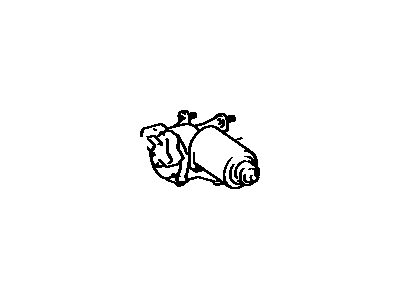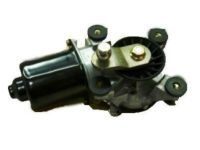

My Garage
My Account
Cart
Genuine Toyota T100 Wiper Motor
Windshield Wiper Motor- Select Vehicle by Model
- Select Vehicle by VIN
Select Vehicle by Model
orMake
Model
Year
Select Vehicle by VIN
For the most accurate results, select vehicle by your VIN (Vehicle Identification Number).
3 Wiper Motors found
Toyota T100 Wiper Motor
If you are in demand for superior quality and affordable OEM Toyota T100 Wiper Motor, then shop with us! We own a wide range of the reduced-priced genuine Toyota T100 Wiper Motor. You can purchase in confidence as all parts come with a manufacturer's warranty. Any issues with our products? No need to worry as we have a hassle-free return policy to guide you every step of the way.
Toyota T100 Wiper Motor Parts Questions & Experts Answers
- Q: How to check and troubleshoot wiper motor issues on Toyota T100?A:Make sure both battery and power source are working well before you drive. When the battery checks out, take the wiper motor out and work the wiper arms manually. Look for stuck or faulty pivots and linkage. Fix what needs work, then put the motor back in to see if the problem's solved. When the wipers move slowly despite your testing, look for loose or corroded connections around all components and replace the motor if no electrical damage is found. When the wiper motor doesn't work when you hit the switch, look at the Fuse first. If it's fine, join a grounding wire from the body of the motor to the car's negative terminal, then test again. When the motor runs, fix the ground wire connection, but if it doesn't work, activate the wipers, unplug the electrical connector from the motor, and verify there's voltage. If voltage is present, check the motor. To test the motor on T100 models, connect one battery lead through a jumper wire to terminal 3 and the other wire to the motor body's negative terminal, to run it at low speed. Switch the positive lead to terminal 2 to see if it runs faster. When running the motor slowly, break the link between terminal 3 and stop the motor anywhere but close to its end point, join terminals 3 and 5, run the positive battery wire to terminal 6, and the negative wire to the body of the motor to ensure it stops exactly at its set point. If the motor doesn't operate, replace it. First, open the hood, pull off the connector to disconnect the wiper motor, unthread the mounting bolts, and remove the motor. After that, you can slip off the lever arm from the wiper's link. To take out the wiper linkage, undo the screws from the cowl and take it out through the vent opening, reversing the steps during installation.









